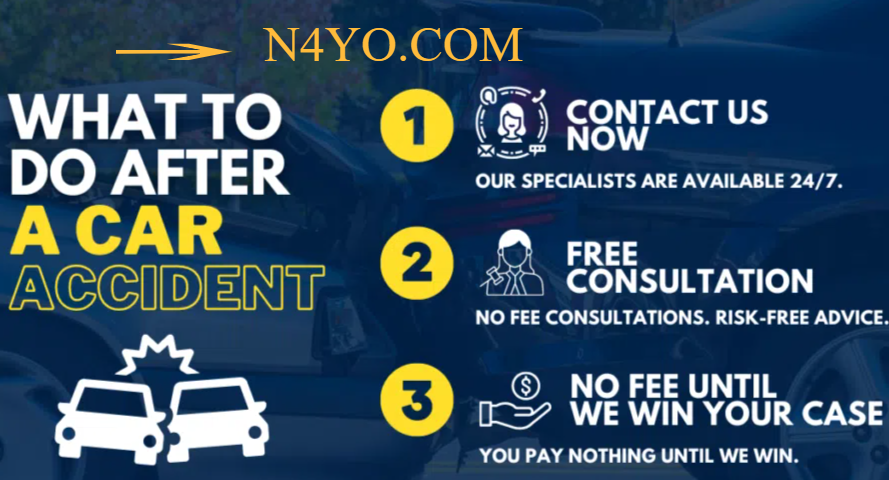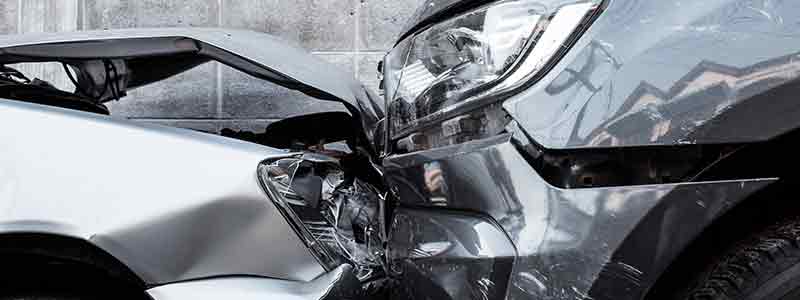Essential Steps and Emotions After a Car Accident 9

How to Act After a Car Accident Before Contacting a Car Accident Lawyer
At Michael Operator, we understand the importance of taking the right steps after a car accident to protect your interests and ensure a smooth legal process. In this comprehensive guide, we will walk you through what to do immediately following a car accident, even before contacting a car accident lawyer.
Source: Information in this article is based on content by Michael Operator from Spaulding Injury Law.
Essential Steps and Emotions After a Car Accident

1. Prioritize Safety [Essential Steps and Emotions After a Car Accident]
In the aftermath of a car accident, the top priority should always be the safety of all individuals involved. This entails several critical actions:
- Check for Injuries: Immediately assess the condition of yourself, passengers, and anyone else affected by the accident. It’s essential to check for injuries and seek medical attention promptly if anyone is hurt. Even seemingly minor injuries can have delayed or hidden symptoms, so erring on the side of caution is advisable.
- Move Your Vehicle to a Safe Location: If the accident is minor and it can be done safely, relocate your vehicle to a secure area away from the flow of traffic. This might be the side of the road or a nearby parking lot. This step helps prevent further accidents and ensures the safety of all individuals on the road.
By prioritizing safety, you are taking immediate action to protect lives and minimize the risk of additional harm. Once safety has been addressed, you can proceed with other essential actions, such as reporting the accident to the police, gathering information, and notifying your insurance company.Essential Steps and Emotions After a Car
- Contact Law Enforcement
Call the police to report the accident. A police report will document the incident, which is crucial for insurance claims and legal proceedings.After a car accident, it is crucial to contact law enforcement, typically the police, to report the incident.
This step serves several essential purposes:
- Documenting the Incident: When law enforcement arrives at the scene, they will create an official police report detailing the accident’s specifics. This report includes information such as the date, time, location, weather conditions, parties involved, and witness statements.It serves as an official record of the accident, which can be invaluable for insurance claims and legal proceedings.
- Determining Fault: The police report may include their assessment of who was at fault in the accident based on their investigation. This can be a critical piece of evidence in determining liability for insurance purposes and potential legal actions.
- Ensuring Accountability: In cases of severe accidents or disputes between parties involved, law enforcement’s presence can help ensure that all parties are accountable for their actions. This can discourage dishonesty or attempts to evade responsibility.
- Safety and Assistance: Law enforcement can also help manage traffic, ensure safety at the accident scene, and call for medical assistance if necessary. Their presence can help maintain order in a potentially chaotic situation.
In summary, contacting law enforcement is a vital step after a car accident, as it provides an official record of the incident, aids in determining fault, and ensures accountability.
It also contributes to the safety and assistance of everyone involved.
What Does a Car Accident Lawyer Do? | Expert Legal Advice 2023
- Gathering Information After a Car Accident: Key Steps for Success
Collect vital information such as the other driver’s contact details, insurance information, and the names of any witnesses. Take pictures of the accident scene and vehicle damage if possible.In the chaotic aftermath of a car accident, gathering information is a pivotal step that can significantly impact the outcome of your insurance claim and legal proceedings.Here’s how to navigate this essential task effectively:- Driver’s Information: Begin by collecting the other driver’s essential information, including their full name, contact number, and address. Exchange your own information as well.
- Insurance Details: Record the insurance details of the other driver, such as the name of their insurance company and their policy number. Ensure you provide your insurance information as well.
- Witnesses: If there are any witnesses to the accident, obtain their names and contact information. Witness statements can be invaluable in determining fault.Essential Steps and Emotions After a Car Accident
- Accident Details: Take detailed notes about the accident itself. This includes the date, time, and location of the incident, as well as a description of how it occurred.
- Photographic Evidence: Use your smartphone or a camera to capture photographs of the accident scene and the damage to all vehicles involved.
Visual evidence can be compelling when dealing with insurance claims. - Police Involvement: If law enforcement is present, obtain the name and badge number of the responding officer. Request a copy of the police report once it’s available.
- Injury Documentation: If you or anyone else is injured, document the extent of injuries and seek immediate medical attention. Medical records will be essential for your case.
- Communication Record: Make a record of any communication you have with the other driver or their insurance company. Note down the date, time, and content of conversations.
- Accident Diagram: Create a simple diagram that illustrates the positions of the vehicles before and after the accident. This can help clarify the sequence of events.
By gathering this comprehensive information, you equip yourself with the necessary evidence and details to support your insurance claim and legal actions if needed. Remember that accuracy and thoroughness are key during this process.
-
Notify Your Insurance Company Essential Steps and Emotions After a Car Accident
Report the accident to your insurance company promptly. Provide them with accurate information, but avoid acknowledging culpability at this stage.After ensuring your safety and collecting necessary information, the next crucial step is to notify your insurance company about the car accident.Here’s why this step is essential and how to go about it:- Prompt Reporting: Most insurance policies require policyholders to report accidents promptly. Delaying this notification can lead to complications in your claim process. Contact your insurance company as soon as possible.
- Provide Accurate Information: When reporting the accident, be sure to provide accurate and detailed information about the incident. Include the date, time, and location of the accident, as well as the names and contact information of other involved parties.
- Avoid Admitting Fault: While it’s important to be truthful, avoid admitting fault at this stage. Leave the determination of fault to the insurance companies and legal authorities.
- Claim Process: Your insurance company will guide you through the claims process. They may assign an adjuster to assess the damage to your vehicle and evaluate your claim.
- Policy Review: Take this opportunity to review your insurance policy. Understand your coverage limits and what expenses may be covered under your policy.
- Documentation: Keep a record of all communication with your insurance company. Note down the date, time, and content of the conversations.
- Claim Number: Your insurance company will provide you with a claim number. Keep this number handy, as it will be used to track the progress of your claim.
By promptly notifying your insurance company and following their guidance, you initiate the claims process, which is essential for covering vehicle repairs, medical expenses, and other costs related to the accident.
-
Preserve Evidence
Preserve any evidence related to the accident, including medical records, repair estimates, and communication with the other party or their insurance company.After a car accident, preserving evidence is crucial for building a strong case.Here’s why it matters and what you should do:- Document the scene: Take photographs of the accident scene from various angles. Capture the position of the vehicles, road conditions, traffic signs, and any relevant details. These photos can serve as valuable evidence.
Essential Steps and Emotions After a Car Accident
Vehicle Damage: Photograph the damage to all involved vehicles. Capture both close-up shots and wider views to show the extent of the damage.
- Injuries: If you or anyone else sustained injuries, document them with photographs as well. This includes visible injuries, bruises, cuts, or any physical harm resulting from the accident.
- Witness Information: If there are witnesses to the accident, gather their contact information. Their statements may be crucial later in the legal process.
- Medical Records: Keep copies of all medical records related to injuries sustained in the accident. This includes doctor’s reports, test results, and bills.
- Repair Estimates: If your vehicle requires repairs, obtain repair estimates from reputable auto shops. This provides evidence of the cost of repairs.
- Communication Records: Keep records of all communication with the other party involved in the accident or their insurance company. This includes emails, letters, and phone call logs.
- Police Report: If law enforcement responded to the accident, obtain a copy of the police report. It contains important details about the incident.
Preserving evidence ensures that you have a clear record of the accident’s aftermath. This documentation can be invaluable when dealing with insurance claims or when consulting a car accident lawyer.Essential Steps and Emotions After a Car Accident
- Document the scene: Take photographs of the accident scene from various angles. Capture the position of the vehicles, road conditions, traffic signs, and any relevant details. These photos can serve as valuable evidence.
-
Seek Medical Evaluation After a Car Accident
Even if you don’t experience immediate agony, it’s essential to see a doctor. Injuries can manifest later, and a medical evaluation creates a record of your condition. -
Consult a Car Accident Lawyer
Once you’ve taken these initial measures, it’s time to consult a car accident lawyer. At Michael Operator, we specialize in assisting clients navigate the complexities of car accident cases. We’ll appraise your situation, determine liability, and work assiduously to secure the compensation you deserve.
By following these procedures, you’ll be well-prepared to preserve your rights and create a strong case. At Michael Operator, we’re here to guide you through every stage of the process, ensuring that you receive the legal support you need.Essential Steps and Emotions After a Car Accident
Road to Justice: A Real-Life Tale of Car Accident Attorneys
Summary:

Essential Steps and Emotions After a Car Accident
This comprehensive guide outlines the steps to take after a car accident before contacting a car accident lawyer. It emphasizes safety as the top priority, including checking for injuries and moving vehicles to secure locations. Reporting the accident to law enforcement is crucial for documentation and determining fault. Gathering information involves collecting driver and witness details, photographing the scene, and keeping records. Promptly notifying your insurance company is essential, but avoiding admitting fault is advised. Preserving evidence, such as photographs, medical records, and communication records, is vital. Seeking medical evaluation, even for minor injuries, is recommended. Finally, consulting a car accident lawyer, like Michael Operator, ensures professional guidance through the legal process. Essential Steps and Emotions After a Car Accident



0 Comments